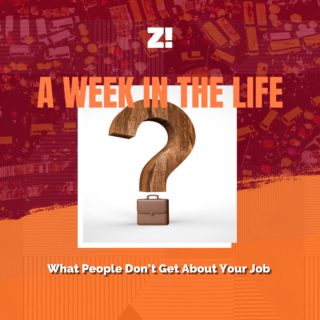If you’ve been online recently, you’ve probably noticed all the tech bros talking about things like Web3, NFTs, etc. With buzzwords like these, it’s easy for us non-tech humans to get confused. But one thing is evident in the midst of all the white noise: something about the internet seems to be shifting.
In this article, we’ll explore the exciting (and often overwhelming) world of Web 3.0, cryptocurrencies, NFTs, IoT, blockchain, metaverse and all the other buzzwords taking over social media.

So, what is Web3?
You know how apps have version numbers? Well, imagine if the internet (the world wide web) were an app. Simply put, Web3 is the next version of the internet. And to properly explore Web 3, we have to first explain Web 1.0 and Web 2.0. Think of each version of the web as the internet’s life span through a period in modern history.
Web 1.0 – The read-only web
In computer science classes back in primary school, we were introduced to the concept of read-only memory (ROM). Data stored on a ROM could not be modified — this is what the internet was like back then. People consumed content on the internet without any form of active engagement, and only a few people were able to create and broadcast content on the internet. Web 1.0 lasted from the end of the 80s till around 2004.
Web 2.0 – The read-write web
Around the mid-2000s, the internet shifted from web 1.0 to Web 2.0. Social media became a thing, and service-based applications like Uber and Netflix streamlined human communication. The world grew smaller, and the internet shifted from the old broadcast-style medium to a more creator-led system. Think of Web 2.0 as the interactive version of the internet we now use, where everyone can create and interact with content — every like, comment, share, retweet, etc., counts.
While the internet now permits creation, interaction, and collaboration, this gift has not come without a curse. We have to give up our data to the big tech overlords who monopolise and profit from it to enjoy the internet.
Web 3.0 – Read-write-own web
Web 3.0 (also Web3) will distribute the power held by the corporate internet behemoths to everyone on the internet. It is the version of the internet that works for everyone without having to rely on any entity.
In Web3, the internet has its own native economy. You don’t need to yield data to companies to gain value on the internet. You have full ownership of your content and can use internet-native currencies (such as cryptocurrencies) to trade with other content creators.
Think of Web3 as the internet of democracy, where no single company determines what happens to user data or content. The blockchain is free and accessible to anyone and can only be changed if an overwhelming majority of people decide to change it.
Let’s define some popular buzzwords in Web3
- First, what is the blockchain?
The blockchain is a public database that maintains a list of public records called blocks arranged in a chain (get it?). The records include money transactions and other forms of information that change their state over time. The interesting thing about blockchains is that older entries are not altered or manipulated, and everyone can see the history of the information as they change over time.
TLDR? Here’s an explainer video:
Why is the blockchain so important?
It’s simple: you don’t need any central authority to confirm the validity of any recorded information on the blockchain. For example, you don’t need a bank to send a debit alert to prove that money has successfully transferred to your friend; you can see it happen in real-time.
- Cryptocurrencies
Right now, we rely on middlemen payment processing companies like Paypal or banking apps to transfer money. The processes involved in wealth transfer are slow and expensive. In Web3, you don’t need no other body. Cryptocurrencies, which are based on the blockchain, cut out the middlemen.
- NFTs
NFT (non-fungible tokens) is defined as “a unit of data stored in a smart contract on a blockchain.” But that’s a lot of geek-speak.
Simply put, NFTs are a type of cryptocurrency that cannot be changed or replaced by something identical. That said, NFTs are a sort of certificate indicating the uniqueness of a digital item. With Web3, creators have intellectual property (IP) attached to every piece of digital content they produce. What an NFT does is that it marks this IP and stores it on the blockchain. Today, NFTs are popular because they can make digital files content unique, allowing creators to sell them as scarce & tradeable assets. TechCabal has a simple explainer article diving deep into the unreal world of NFTs. Check it out!
- Internet of Things (IoT) and the metaverse
The Internet of Things (IoT) promises that everyday objects will have the ability to send and receive data through the Internet. Common examples of IoT devices today are smart home security systems, wearables and shipping container tracking systems. In a world where everything is going digital, the metaverse is a purely online world where people can interact, bringing us into a fully simulated virtual reality. IoT and the metaverse are pretty much digital twins.
In conclusion: Web3 and the internet of the future
The idea behind Web3 is to build an internet that benefits everyone. Web3 is powered by peer-to-peer networks, user-controlled data and monetisation. Advancements in blockchain technology, machine learning, the metaverse and IoT, all have vital roles in bringing Web3 to life.
Machine learning algorithms are already changing the way we live today through data and predicting decisions close to what a human being would make. Combined with the exciting possibilities of blockchain technology, Web3’s goal to create a more democratic, more connected internet is on the horizon.
With that being said, the evolution of the internet from web 2.0 to Web3 will probably take decades, as much of the founding blocks of Web3 are still currently being built. You don’t have to feel left out or sink into the despair of cluelessness when you see tech and crypto bros pontificating on Twitter — there’s still a lot of trial and error to be made. However, we do hope that this article gives you an entry-level perspective into the internet of the future.




